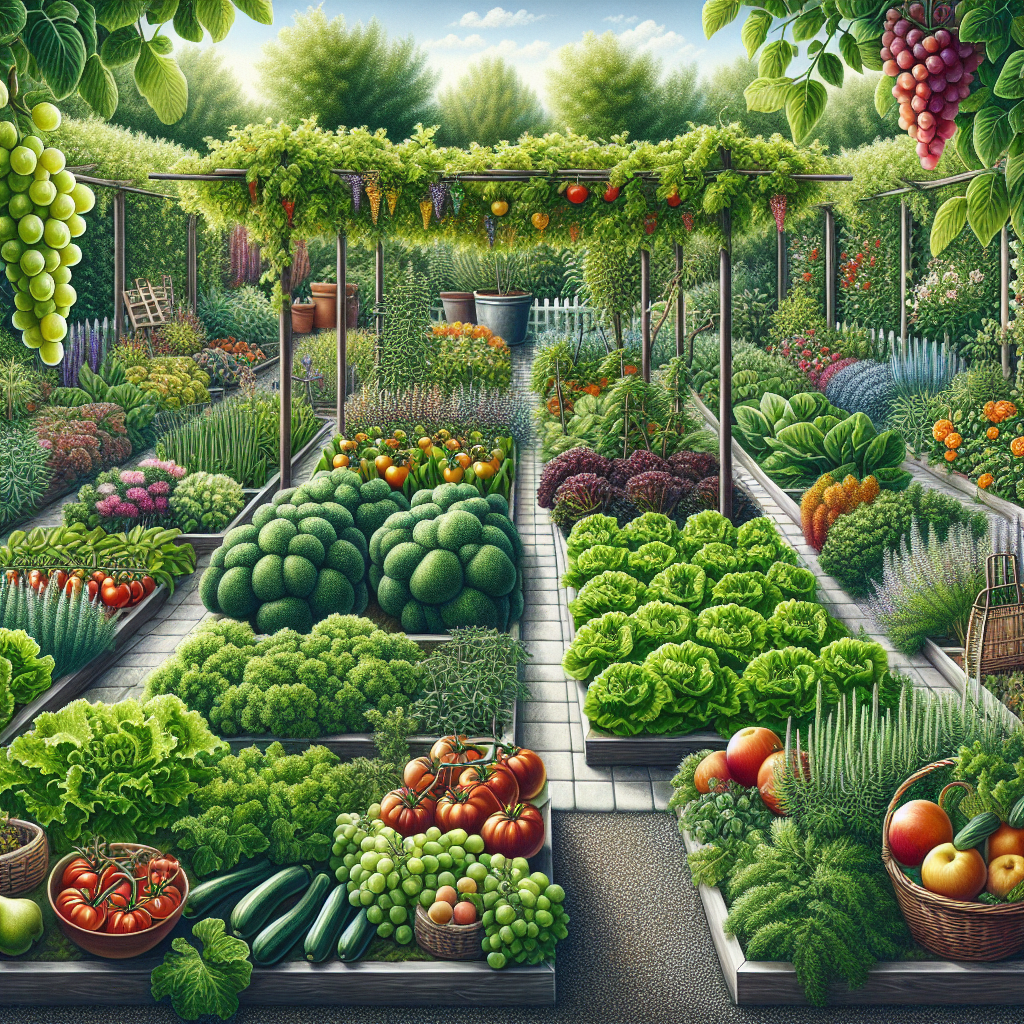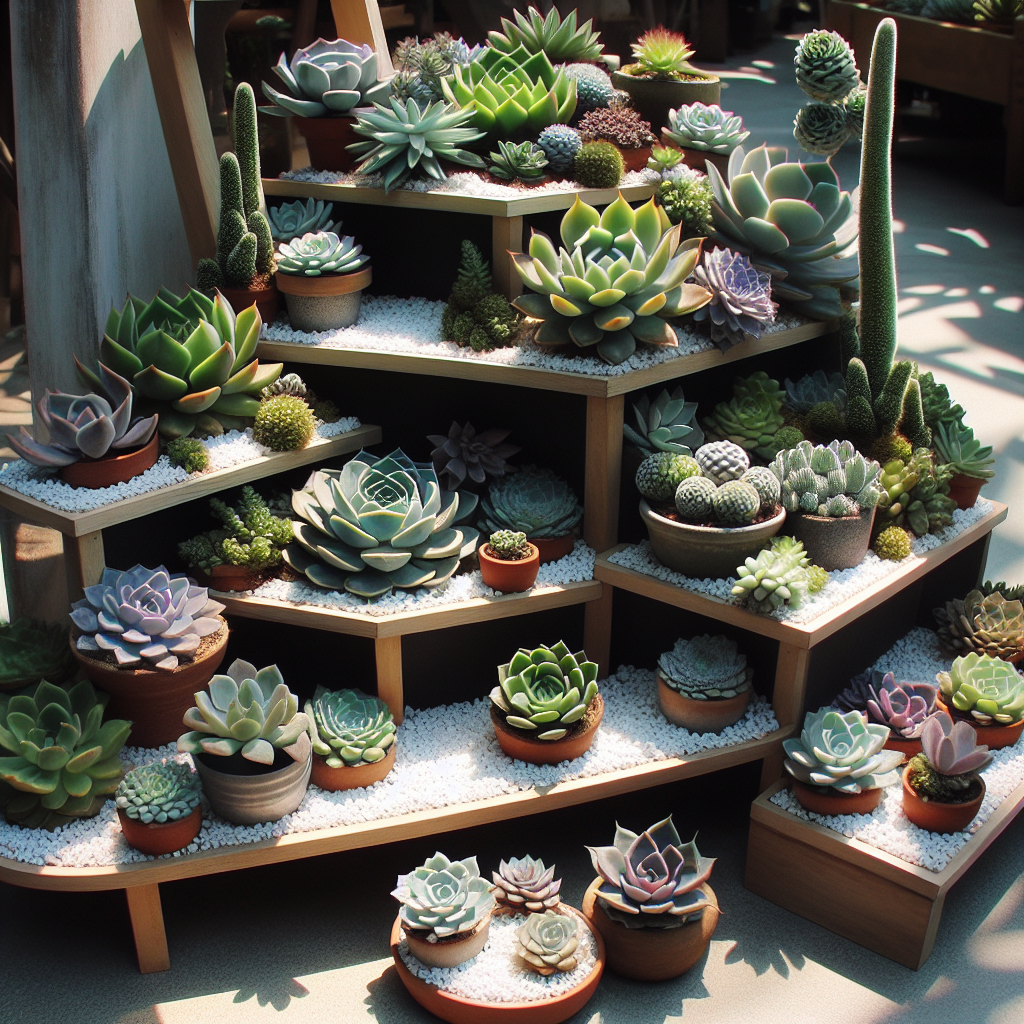Edible Garden with Fruits, Vegetables, and Herbs
Creating an edible garden is not only a rewarding project but also a sustainable way to provide fresh and healthy produce for you and your family. Imagine stepping outside your door and plucking a ripe tomato or snipping some fragrant herbs for your next meal. With a little planning and effort, you can transform your outdoor space into a bountiful oasis of fruits, vegetables, and herbs. In this comprehensive guide, we will walk you through the step-by-step process of creating your own edible garden, from selecting the right plants to maintaining and harvesting them. Let’s get started!
Step 1: Choosing the Right Location
The first step in creating your edible garden is to choose the right location. Most fruits, vegetables, and herbs require at least six hours of direct sunlight per day, so it’s important to find a spot in your yard that receives adequate sunlight. Look for an area that is not shaded by trees or buildings.
Additionally, consider the proximity to your kitchen. You’ll want your edible garden to be easily accessible so you can quickly grab fresh ingredients while cooking. If possible, choose a location near your kitchen or patio.
Once you’ve identified the perfect spot, mark out the area using stakes and string. This will help you visualize the size and shape of your garden.
Step 2: Preparing the Soil
Good soil is the foundation of a successful edible garden. Before planting, it’s important to prepare the soil to ensure optimal growing conditions for your plants.
Start by removing any weeds or grass from the designated area. Use a garden fork or shovel to loosen the soil and break up any clumps. Remove any rocks or debris that you come across.
Next, enrich the soil with organic matter such as compost or well-rotted manure. Spread a layer of compost over the area and use a garden fork or tiller to mix it into the soil. This will improve the soil structure and provide essential nutrients for your plants.
Finally, level the soil using a rake, making sure it is smooth and free of any large bumps or depressions.
Step 3: Choosing the Right Plants
Now comes the fun part – choosing the plants for your edible garden! Consider the climate and growing conditions in your area to select plants that will thrive.
Start by making a list of fruits, vegetables, and herbs that you and your family enjoy eating. This will ensure that you’re growing produce that you’ll actually use.
Next, research the specific requirements of each plant on your list. Some plants, like tomatoes and peppers, prefer warmer climates, while others, like lettuce and spinach, thrive in cooler temperatures. Make sure to choose plants that are suitable for your climate and growing season.
Consider the space available in your garden and the growth habits of the plants. Some plants, like cucumbers and squash, spread out and require more space, while others, like herbs, can be grown in containers or small raised beds.
Once you’ve narrowed down your plant selection, it’s time to purchase the seeds or seedlings. Look for high-quality seeds or healthy young plants at your local nursery or garden center.
Step 4: Planting Your Garden
With your soil prepared and plants selected, it’s time to start planting your edible garden.
Begin by following the planting instructions provided on the seed packets or plant labels. Different plants have different spacing requirements, so make sure to give each plant enough room to grow.
Use a trowel or your hands to dig a hole for each plant. Gently remove the seedling from its container and place it in the hole, making sure the top of the root ball is level with the soil surface. Backfill the hole with soil and gently firm it around the plant.
Water the newly planted seedlings thoroughly to help them settle into their new home. Keep the soil consistently moist but not waterlogged during the early stages of growth.
Step 5: Maintaining Your Garden
Once your edible garden is planted, it’s important to provide ongoing care to ensure healthy growth and abundant harvests.
Water your plants regularly, especially during dry periods. Aim to keep the soil evenly moist, but be careful not to overwater, as this can lead to root rot and other problems. Consider installing a drip irrigation system or using a soaker hose to deliver water directly to the roots.
Monitor your plants for pests and diseases. Inspect the leaves and stems regularly for any signs of damage or infestation. If you notice any problems, take appropriate action, such as handpicking pests or using organic pest control methods.
Keep weeds under control by regularly removing them from your garden. Weeds compete with your plants for nutrients and water, so it’s important to stay on top of them. Consider using mulch to suppress weed growth and conserve moisture in the soil.
Fertilize your plants regularly to provide them with the nutrients they need to thrive. Use organic fertilizers or compost to avoid synthetic chemicals and promote soil health.
Step 6: Harvesting and Enjoying Your Bounty
As your plants grow and mature, they will start to produce delicious fruits, vegetables, and herbs. Harvesting at the right time is crucial to ensure the best flavor and quality.
Refer to the specific harvesting instructions for each plant, as the timing can vary. Generally, fruits and vegetables are ready to be harvested when they are fully ripe and have reached their desired size and color. Herbs can be harvested at any time, but it’s best to pick them in the morning when the essential oils are most concentrated.
Use sharp scissors or pruning shears to harvest your produce. Cut fruits and vegetables with a short stem attached to avoid damaging the plant. For herbs, snip the stems just above a leaf node to encourage bushier growth.
Once you’ve harvested your bounty, it’s time to enjoy the fruits of your labor! Incorporate your homegrown produce into your favorite recipes, share them with friends and neighbors, or preserve them for later use.
Conclusion
Creating an edible garden with fruits, vegetables, and herbs is a fulfilling and sustainable project that allows you to enjoy fresh and healthy produce right from your backyard. By following the step-by-step instructions in this guide, you can create a thriving garden that provides you with a bountiful harvest year after year. So roll up your sleeves, grab your gardening tools, and get ready to embark on this exciting journey of growing your own food!





